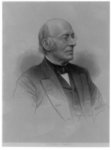After the establishment of the GDR (German Democratic Republic) and the FRG (Federal Republic of Germany) in 1949 at the dawn of the Cold War, a prolonged tension between East Germany and West Germany took place. Distracted by their intentions to push the Allies out of West Berlin, the GDR was initially unaware that the citizens of the East were beginning to travel towards checkpoints to leave East Germany.1 The eventual influx of East German citizens funneling into West Berlin through various forms would eventually be recognized as a dangerous factor that threatened the existence of the GDR, leading them to make breakneck decisions.
By the 1950s, the post-war East German economy was still left broken following the war. Although this itself was a large problem, there had been an unforeseen factor. Although the East German state was attempting to socialize their economy with centralized production and distribution of capital goods, its citizens were still suffering from a lack of basic consumer goods. This factor of a broken economy motivated citizens to begin travelling from East Germany to West Germany via the checkpoints in East Berlin. The departure of these citizens developed into what would be considered a large-scale brain drain of the Eastern state. Many of the citizens that had been moving to West Germany through Berlin were citizens around the age of twenty-five. These young people were the primary workers of the East German economy, and they were leaving for the West, seeing their future as best served in West Germany. The West German economy in the 1950s became known as “The Economic Miracle,” as a phoenix rising from the ashes of World War II. The workers draining from East Germany to the West contributed to the declining economic condition of the GDR, and a continued drain threatened the existence of the Eastern state as a whole. Because of the slow trickle of citizens draining from the East in the early to mid 1950s, Stalin–who at the time was much more concerned with pushing the Americans out of West Berlin–was not aware of this loss of citizens. But this leak eventually turn into about 3.5 million East Germans defecting from the GDR by the late 50s and early 1960. By 1961, the leader of the Soviet Union, Nikita Khrushchev, recognized that something had to be done to address this problem.2
The night of the formation of the Wall was August 12th, 1961. Diplomats from the West at the time were hearing rumors that the East was going to take some kind of action to increase the difficulty of crossing between East and West Berlin. It was around midnight that the East German troops and workers began to create a barrier and close off the border. The barrier was especially shocking as it was put up with such speed, being erected by the morning after it had begun. Additionally, the barrier was put up with no actual disruption of the agreement between them and the Allies, so legally, the barrier was allowed. This made many citizens outraged as it left some East Berliners on the West side and others on the East.

The fence and small walls would eventually be replaced with a ten-to-thirteen-foot-high cement barrier and encircle West Berlin in its entirety.3 But despite the barrier, many East German citizens would try to escape with the majority ending up dead and the rest being capture and jailed. To the satisfaction of East Germany, they successfully cut off the draining of their citizens to that of a mere trickle and secured the existence of the “people’s republic.”4 The Berlin Wall forever after became the most prominent symbol of the Cold War. It was before this Wall and because of this Wall that two American presidents famously claimed the superiority of American values over that of “communism.” With Kennedy, we all became Berliners, and with Reagan, we applauded when Berliners began to “tear down this wall.”
- Norman Gelb, The Berlin Wall: Kennedy, Khrushchev and a Showdown in the Heart of Europe (Simon & Schuster, 1988), 34-35. ↵
- Frederick Taylor, The Berlin Wall: A World Divided (HarperCollins, May 2007), 17-20. ↵
- Salem Press Encyclopedia, January 2016, s.v. “Berlin Wall,” by Herbert Luft. ↵
- Wole Soyinka, “Beyond the Berlin Wall,” Transition, no. 51 (1991). 1-2. ↵



34 comments
Hazel Scruggs
To the stmuscholars.org webmaster, Your posts are always well-delivered and engaging.
Daniel Matheu Baldor
I really enjoy reading articles about this topic. It is amazing how fast the West Germany recovered from the War and how bad was the situation in the other site of the wall. The Berlin wall was a symbol of the Cold War, not only because it separated the U.S. and the U.S.S.R., but also because there were two different governments. The fall of the Berlin wall is probably one of the most historical events and it represents the victory of the West over the East.
Micheala Whitfield
I love this topic. My uncle was actually there the day they brought the Berlin Wall down. he has a piece of it in his collection. This article was short but I enjoyed the information. To be honest I was unaware that Germany split into two. Democrats and Republics. It’s ironic to see how Germany’s history, a monumental moment for this can compare to what is going on in the US. Both have the same underlying reasons for the wall. It does make you wonder how the outcome will effect citizens. Great article, the wall will always be a symbol for Germany I hope one day I can go see were they built and tore it down.
Samuel Vega
This was a short, but very informative article. The article covered the brain drain from East Germany to West Germany and how West Germany became the Economic Miracle at the start of the Cold War. It is incredible how quickly the Wall, to separate East and West Berlin, was constructed overnight to stop the drain from East Berlin to West Berlin. The Wall became a powerful symbol of the Cold War for almost thirty years. If the “wall” between Mexico and the United States is expanded, what will our future history have to say about this symbol?
Kenneth Gilley
It is amazing that it takes the average American city three years to build an overpass, but the GDR was able to build the Berlin Wall in just one day. It is also interesting to see how the economy of communist East Germany faltered so badly while West Berlin’s economy flourished. It is a shame that so many people’s lives were destroyed by the Wall. This was a very interesting article!
Alicia Guzman
It is horrible how much a single wall can change the lives of so many people. The Berlin Wall separated so many families and an entire country for decades. What blows my mind is that it was only torn down in 1989 – that is not that long ago really. This wall was up for a total of SEVEN US presidents! This article does a wonderful job of detailing the events and impact of the Berlin Wall.
Samantha Ruvalcaba
I wasn’t aware about the economical motivators that drove Stalin to build the wall, so I was happy to learn about them through this article. What he did though–this act–seemed as if he was imprisoning his citizens, which is very unsettling. Such talks about building a wall despite current financial needs still rings true in America today. Nice job on breaking the division down in your article.
Jabnel Ibarra
The Berlin Wall was perhaps one of the most significant places in the Cold War. As a remnant of World War 2, the Berlin Wall stood for much more than a divider for two nations. It stood as the division between two ideologies, two halves of the world: the West and the East, capitalism and communism. The haste in which the wall was built and how quickly it was fortified implies to me that officials of the time were well aware of this themselves. I was disappointed at how little was mentioned about the security of the wall and how many people tried to escape from the East to the West, as I feel much more could have been elaborated on the subject. With that being said, it seems to imply something that people were so desperate to escape from East Germany to West Germany, and never the other way around.
Gabriela Ochoa
This is a really great article. I know some about the Berlin wall but I never knew the story behind why it was built or that it was built on one night. Each side being trapped and some separated from their families is sad but the stories of them coming back together when the wall fell after so many years is amazing.
John Smith
I think the Berlin Wall is a great metaphor for the divide between western powers and The Communist Bloc. Eventually, the wall would fall and democracy would at least be attempted again in the Eastern European countries. It is incredibly interesting that after WW2 west Germany’s economy flourished, I don’t think anyone at the time was expecting that and I was surprised to read about it in the article.